Cornelia Parker @ Tate Britain
19 May 2022 – 16 October 2022
Whether it’s the ‘shock’ of a work like Tracey Emin’s ‘My Bed’ or the ‘audacity’ of Damien Hirst’s ‘The Physical Impossibility of Death In the Mind of Someone Living’, there are certain works of contemporary art that capture the collective imagination. Cornelia Parker’s ‘Cold Dark Matter: An Exploded View’, for me, is another work that falls into that category. An installation that manages to be conceptually so simple, yet simultaneously so complex, that to see it is to gawp in wonderment.
Cornelia Parker’s exhibition at Tate Britain, doesn’t disappoint; How could it? ‘Cold Dark Matter: An Exploded View’ is one of the first installations you encounter.
However to reduce Parker’s art to this one monumental work, does not do her justice. Much of her work takes the everyday object and reconfigures its purpose. That purpose is often to present the viewer with an alternative narrative on subjects of profound social and political significance.
There were so many highlights to this exhibition, but here are a few.
‘Thirty Pieces of Silver’ (1988)
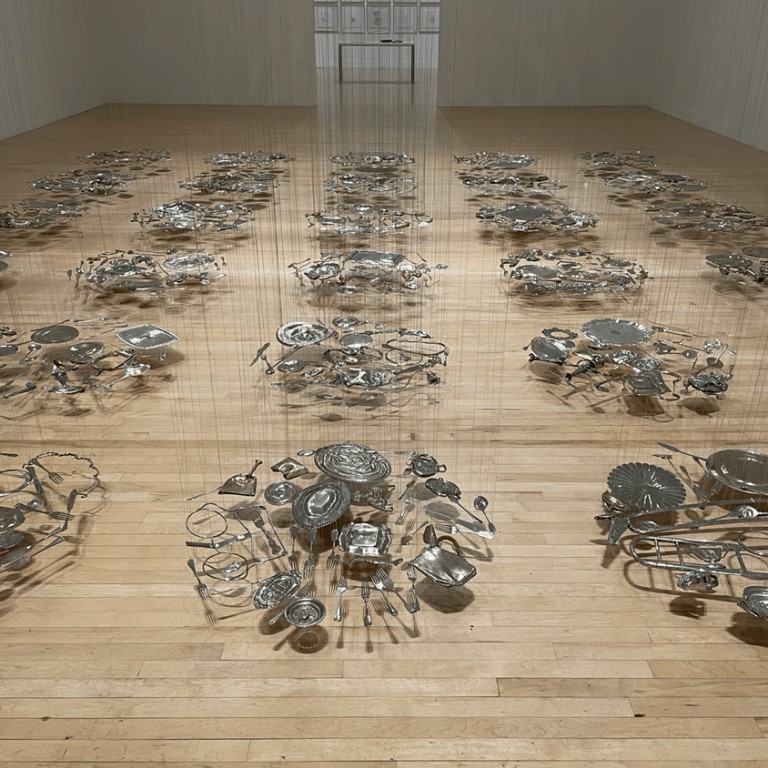
Thirty Pieces of Silver (1988)
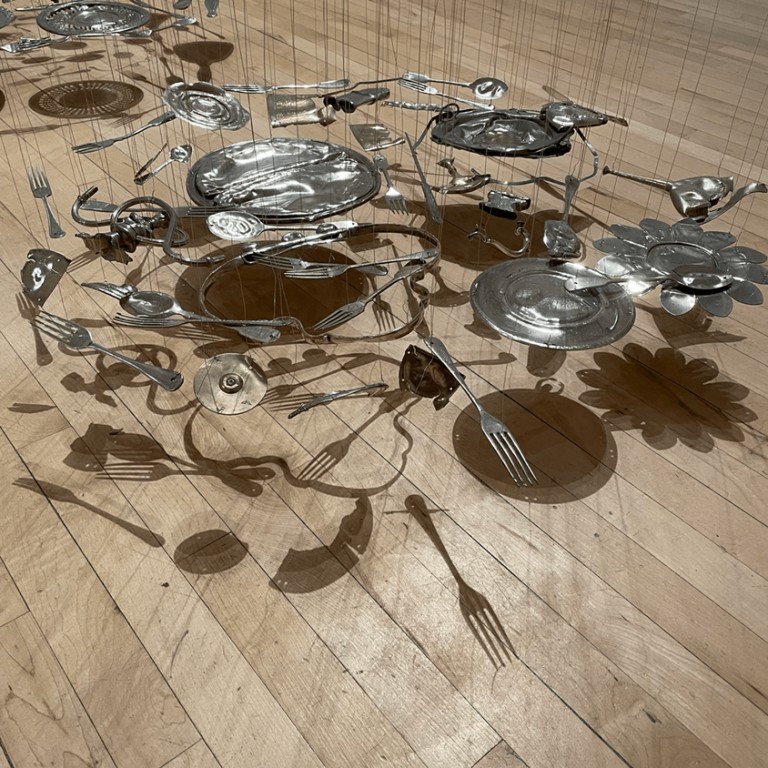
Thirty Pieces of Silver (1988) detail
The beauty and lightness of this work is in stark contrast to the violence used to create it.
Silverware, in the form of teaspoons, candlesticks, bowls, trays and teapots, objects of desire, status and social class, here with their stale breath of a former life literally squashed out of them, by a steam roller no less. What this represents, one can only speculate. Is Parker attacking a class system, by rendering its visible forms useless? Or perhaps a commentary on the futility of attaching so much cultural significance to certain metals and objects.
What the installation does present the viewer with is a repurposing of objects. What were once functional are now not. Their form levitating above the shadow of their former selves a separation of body and soul. Parker had a Catholic upbringing; if sited in a church, this installation would certainly take on a religious significance.
‘Cold Dark Matter: An Exploded View’ (1991)
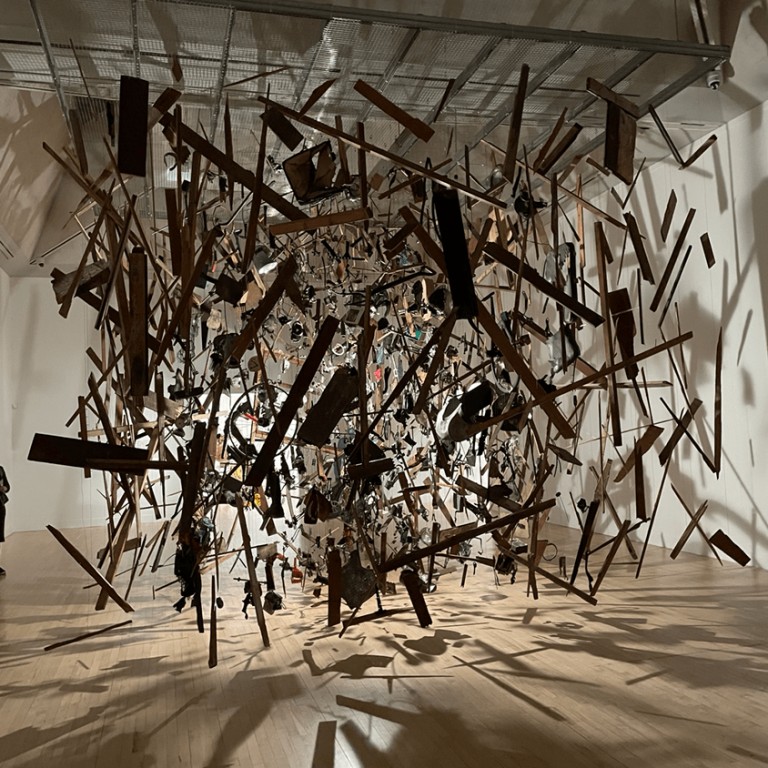
Cold Dark Matter: An Exploded View (1991)
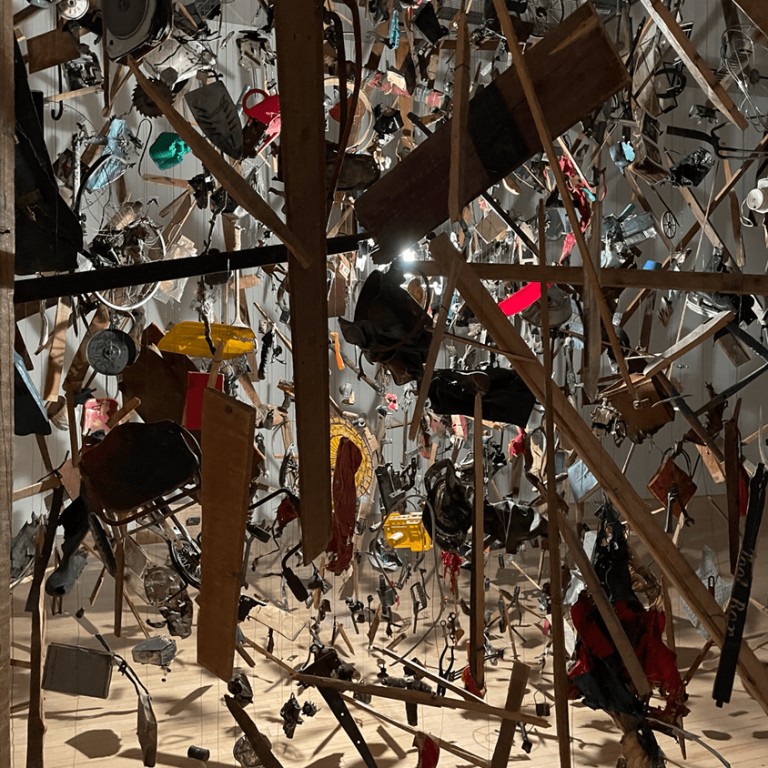
Cold Dark Matter: An Exploded View (1991) detail
‘An exploded view’, the form used by engineers to show the constituent parts of an object, such as a washing machine or car engine. Here Parker chooses a ‘typical’ garden shed and has it blown up. The installation is breath-taking. Suspended from the ceiling, with a bright light at its centre and exploding outwards, an instant in time captured at the moment of creation. The shadows cast on the surrounding wall indicating a future destiny.
The choice of objects is critical too. Not only parts of tins, forks and wellington boots, the usual items found in a shed, but also children’s toys, parts of bicycles and other childhood ephemera. The shed serving as both repository for garden equipment and also a life, history and stories that accompany it.
‘War Room’ (2015)
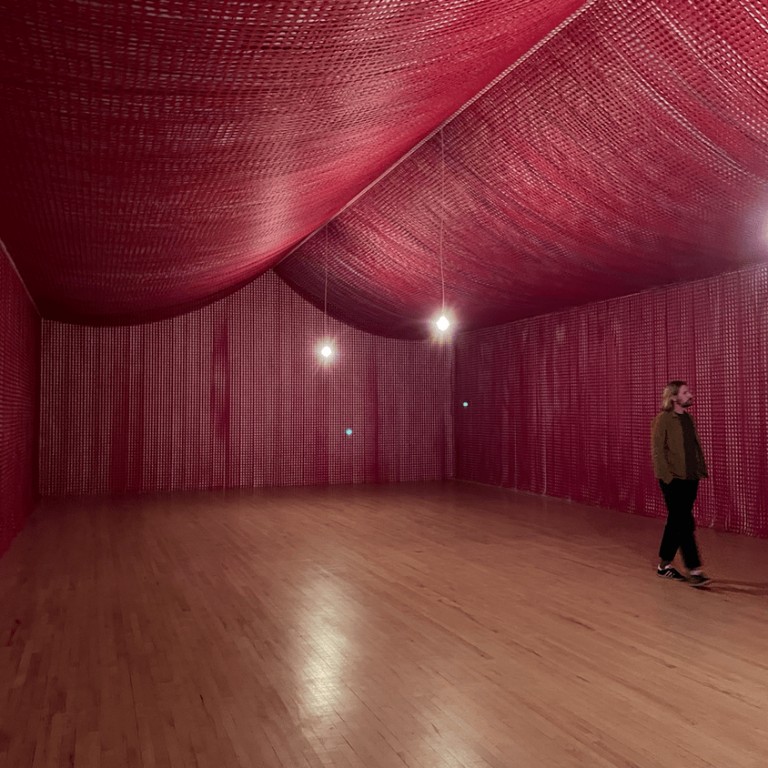
War Room (2015)
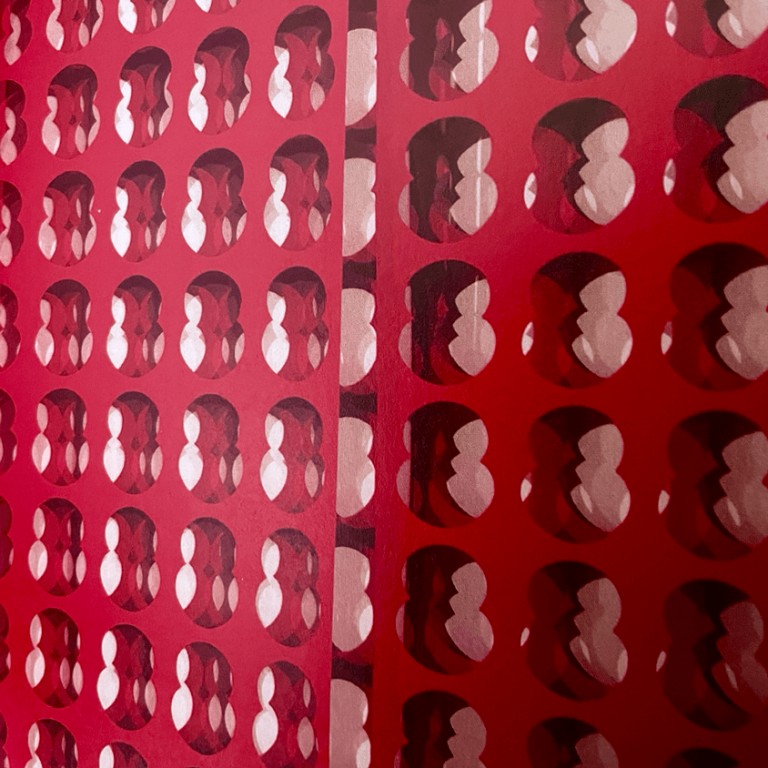
War Room (2015) detail
War, the subject of so much artwork. Goya’s ‘The Disasters of War’, Picasso’s ‘Guernica’, Jake and Dinos Chapman’s ‘Hell’ to name but three, each depicting the savagery, destruction and horror inflicted on largely civilian populations.
Parker’s ‘War Room’ in contrast focusses on the fallen. However, instead of depicting the physical body in all its suffering, Parker opts for the absence of presence. Taking what’s left from the rolls of paper from which poppies have been cut, and constructing a huge tent-like structure. A deep red paper punctured with thousands of poppy shaped holes. Each void a representation of someone fallen in battle. The physical absence, a reminder of the presence of a loved one that war takes from us.
Its scale and what it represents quite distressing.
Parker does manage to gain access to unique environments. For example, The House of Commons for her film ‘Left, Right and Centre’, or the Royal Mint for ‘Embryo Money’. This does I suspect also present her with problems (or maybe not!), for to be given this kind of privileged access must come with an unwritten understanding that the artwork must refrain from being too critical of the institutions it engages with. To be overtly critical would surely result in access being withdrawn and therefore Parker is an establishment artist. Yes one which engages in a thoughtful and original way, but not one that attempts to scrutinise and hold it to any meaningful account. Maybe that’s not her aim.
Nevertheless, basking in the originality of her work, engaging with the new reading of objects repurposed, was good enough for me.